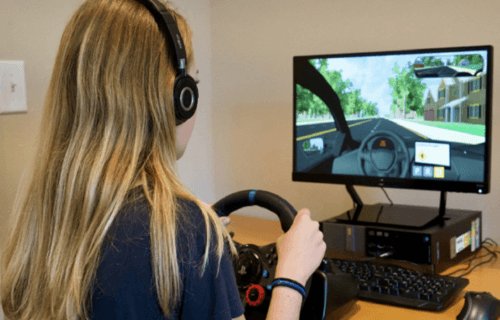PHILADELPHIA — There’s good news for moms and dads worried about their kids driving for the first time. A new virtual driving assessment (VDA) has been developed to reduce the number of accidents involving newly licensed young drivers. This advanced system predicts the crash risk for these teenage motorists.
Researchers discovered that the skills demonstrated during this VDA, when granting a license, can accurately estimate the crash risk of the driver. The VDA exposes participants to typical severe crash situations.
Scientists believe the findings move them closer to pinpointing the specific skill deficiencies that increase crash risks for novice drivers. These insights would allow experts to create personalized interventions to enhance driving skills that prevent accidents.
Though drivers under 21 years-old make up approximately five percent of all drivers, they are involved in about 12 percent of all vehicle accidents and 8.5 percent of fatal accidents. The most perilous period is the months immediately after getting their new license.
This study was spearheaded by the Center for Injury Research and Prevention (CIRP) at the Children’s Hospital of Philadelphia (CHOP), in collaboration with the University of Pennsylvania and the University of Michigan. Over the last 20 years, CIRP has identified inadequate driving skills, like poor speed management, as the primary cause of accidents among beginner drivers.

Efforts were made to create a self-guided VDA that evaluates driving skills in severe crash situations, which on-road tests can’t measure. The VDA employs the “Ready-Assess” platform from Diagnostic Driving, Inc., an AI-powered virtual driving assessment that offers users feedback and tools for improvement.
In the recent study, the team scrutinized the VDA’s effectiveness in predicting crash risk during the first year of licensing in Ohio. VDA results were cross-referenced with police-reported crash data for that year.
“Our previous research showed that performance on the VDA predicted actual on-road driving performance, as measured by failure on the licensing road test,” says Dr. Elizabeth Walshe of CIRP in a media release. “We found that drivers categorized by their performance as having major issues with dangerous behavior were at higher risk of crashing than average new drivers.”
The study analyzed data from over 16,000 first-time, newly licensed drivers under 25. Those who performed exceptionally well on the VDA, tagged as having “No Issues,” exhibited a crash risk 10 percent below average. Conversely, those with “Major Issues with Dangerous Behavior” had a crash risk 11 percent above average. These figures held true even when factors like age, gender, and socio-economic status were taken into account.
“These findings are incredibly important because they provide us with quantitative evidence that we can approach young driver safety in a new way – by predicting crash risk and aiming resources to those who need them most,” adds co-author Dr. Flaura Winston of CIRP.
The researchers express hope that this initiative would lead to fewer injuries for teens as they begin driving.
“We know young novice drivers are at higher risk of crashing than more experienced drivers. The novel VDA tool uses information about their behaviors, such as virtual braking, accelerating, steering, and crashing,” says Professor Michael Elliott, from the University of Michigan School of Public Health. “What’s crucial to note is that most of these behaviors are amenable with additional driving training.”
The study is published in the journal Pediatrics.
You might also be interested in:
- Best Cars For Teens: Top 5 Vehicles For Young Drivers Most Recommended By Experts
- Winter driving tips: These items are must-haves on snowy roads for drivers
- High-tech traffic jam: Certain self-driving cars actually cause more congestion

South West News Service writer Stephen Beech contributed to this report.
Lea la versión en español en EstudioRevela.com: Nuevo examen de manejo virtual predice qué conductores adolescentes tienen un mayor riesgo de sufrir accidentes.
